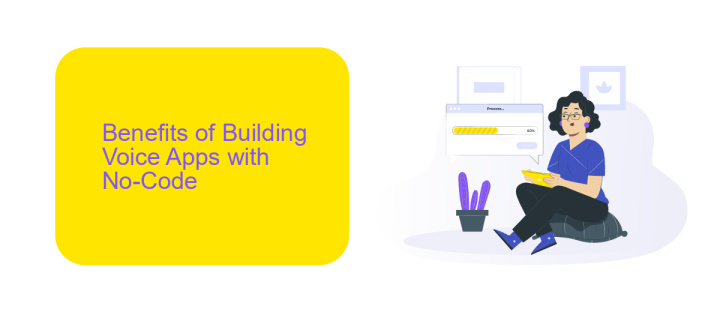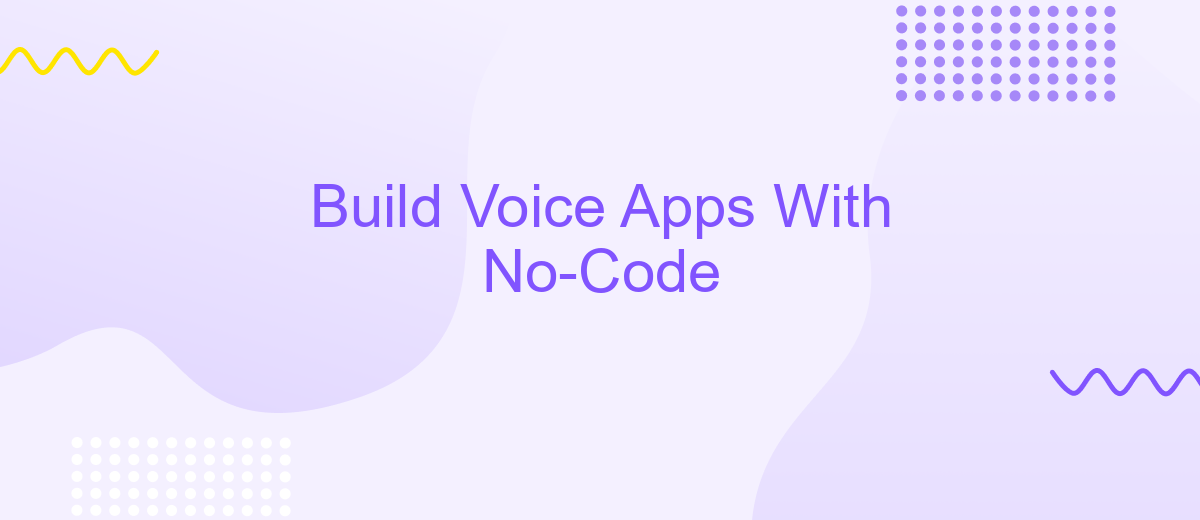Build Voice Apps With No-Code
Building voice applications no longer requires extensive coding skills, thanks to the rise of no-code platforms. These innovative tools empower anyone, from seasoned developers to complete beginners, to create sophisticated voice apps with ease. In this article, we will explore how you can leverage no-code solutions to design, develop, and deploy your own voice applications, making advanced technology accessible to all.
Introduction
Building voice applications has never been easier, thanks to no-code platforms. These tools empower individuals without programming skills to create sophisticated voice apps for various purposes, from personal assistants to business automation. No-code solutions are revolutionizing the tech landscape, making it accessible to a broader audience.
- Intuitive drag-and-drop interfaces
- Pre-built templates and modules
- Integration with popular voice assistants like Alexa and Google Assistant
One of the key advantages of using no-code platforms is the ability to integrate with other services seamlessly. For example, ApiX-Drive enables you to connect your voice app with various APIs, automating workflows and enhancing functionality. This integration capability not only saves time but also ensures your voice app can interact with other essential tools and services effortlessly.
Benefits of Building Voice Apps with No-Code

Building voice apps with no-code platforms offers numerous benefits, making the development process more accessible and efficient. One significant advantage is the reduction in time and cost, as these platforms eliminate the need for extensive coding knowledge. This democratizes the development process, allowing businesses of all sizes to create sophisticated voice applications without hiring specialized developers. Additionally, no-code platforms often come with pre-built templates and drag-and-drop interfaces, further simplifying the creation process and enabling rapid prototyping and iteration.
Another key benefit is the ease of integration with other services and systems. For instance, using a service like ApiX-Drive, developers can seamlessly connect their voice apps with various APIs and third-party applications. This not only enhances the functionality of the voice app but also ensures a smoother user experience by automating workflows and data synchronization. Moreover, no-code platforms often provide robust support and community resources, helping users troubleshoot issues and continuously improve their applications.
Getting Started with No-Code Voice App Development

Creating a voice app without any coding knowledge is now easier than ever. With the rise of no-code platforms, anyone can develop functional and engaging voice applications. These platforms provide user-friendly interfaces and drag-and-drop features, enabling you to design, test, and deploy your voice app quickly.
- Choose a no-code platform: Select a platform that suits your needs, such as Voiceflow or Dialogflow.
- Design your voice app: Use the platform's tools to create conversational flows and user interactions.
- Integrate APIs: Utilize services like ApiX-Drive to connect your voice app with various APIs for enhanced functionality.
- Test your app: Use built-in testing features to ensure your app works as intended.
- Deploy your app: Publish your voice app on platforms such as Alexa or Google Assistant.
By following these steps, you can launch a fully functional voice app in no time. The integration capabilities of services like ApiX-Drive make it easy to add advanced features without any coding. Start your no-code voice app development journey today and bring your ideas to life.
Best Practices for No-Code Voice App Development

When developing voice apps using no-code platforms, it's essential to follow best practices to ensure a seamless user experience and robust functionality. Start by clearly defining the user journey and the specific tasks your voice app will handle. This helps in creating a focused and user-friendly design.
Next, prioritize natural language understanding (NLU) by using pre-built templates and modules that can handle a variety of user inputs. This ensures that your voice app can understand and respond accurately to user commands.
- Utilize a reliable no-code platform with strong NLU capabilities.
- Incorporate user feedback early and often to refine the app.
- Leverage integration tools like ApiX-Drive to connect your voice app with other services.
- Test the app extensively in different environments to ensure reliability.
Finally, keep scalability in mind. As your user base grows, your voice app should be able to handle increased traffic and more complex interactions. Regular updates and maintenance are crucial to keep the app performing optimally and securely.
- Automate the work of an online store or landing
- Empower through integration
- Don't spend money on programmers and integrators
- Save time by automating routine tasks
Conclusion
Building voice apps with no-code platforms has revolutionized the way developers and businesses approach voice technology. By eliminating the need for extensive coding knowledge, these platforms democratize app development, making it accessible to a broader audience. This shift not only accelerates the development process but also allows for more creative and diverse applications to emerge, catering to various industries and user needs.
Moreover, integrating voice apps with other services has never been easier, thanks to tools like ApiX-Drive. This service simplifies the process of connecting your voice app with various APIs, ensuring seamless data flow and enhanced functionality. Whether you're looking to integrate with CRM systems, social media platforms, or other business tools, ApiX-Drive provides a user-friendly interface to manage these connections effortlessly. In conclusion, no-code platforms combined with powerful integration tools are paving the way for the future of voice app development, enabling anyone with a vision to bring their ideas to life.
FAQ
What is a no-code voice app?
What platforms can I use to build no-code voice apps?
Can I integrate my no-code voice app with other services?
Do I need any technical skills to build a no-code voice app?
How long does it take to build a no-code voice app?
Time is the most valuable resource in today's business realities. By eliminating the routine from work processes, you will get more opportunities to implement the most daring plans and ideas. Choose – you can continue to waste time, money and nerves on inefficient solutions, or you can use ApiX-Drive, automating work processes and achieving results with minimal investment of money, effort and human resources.


